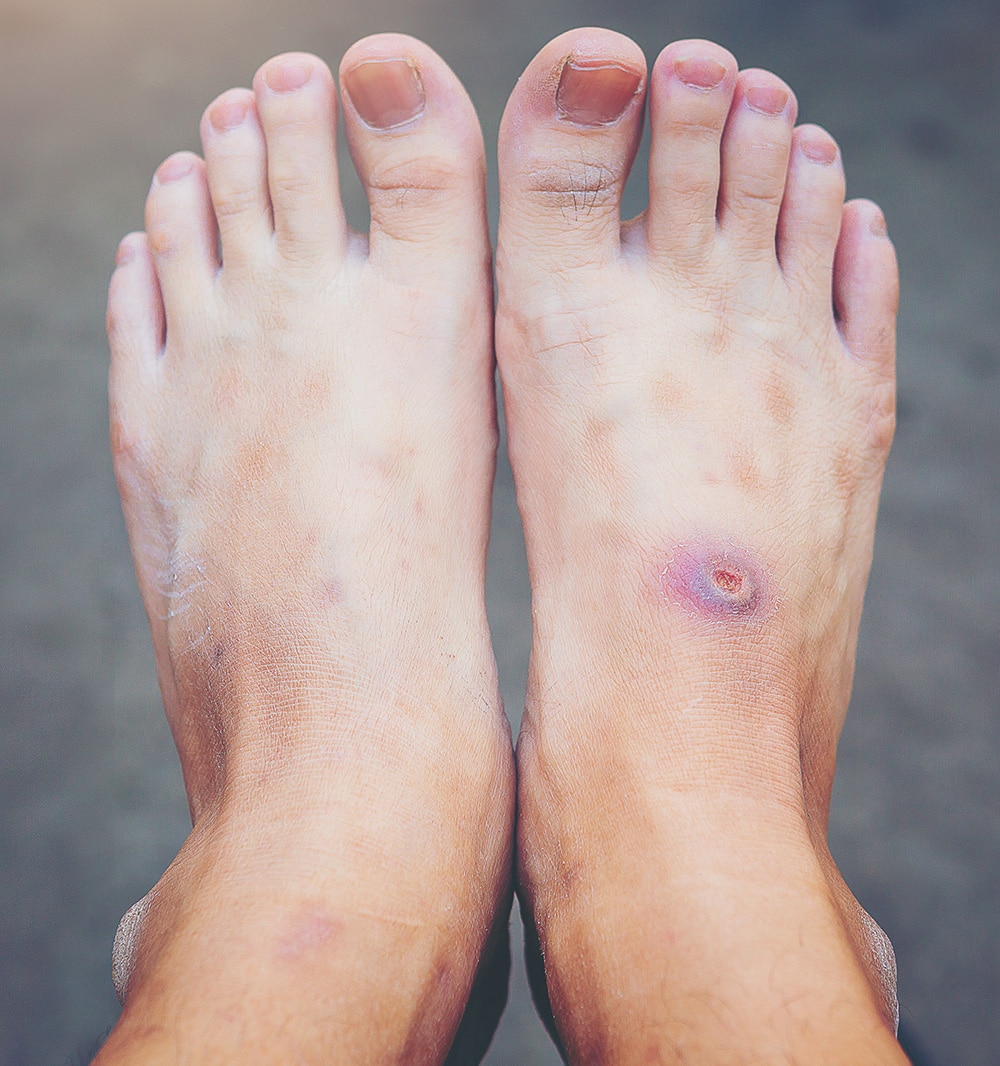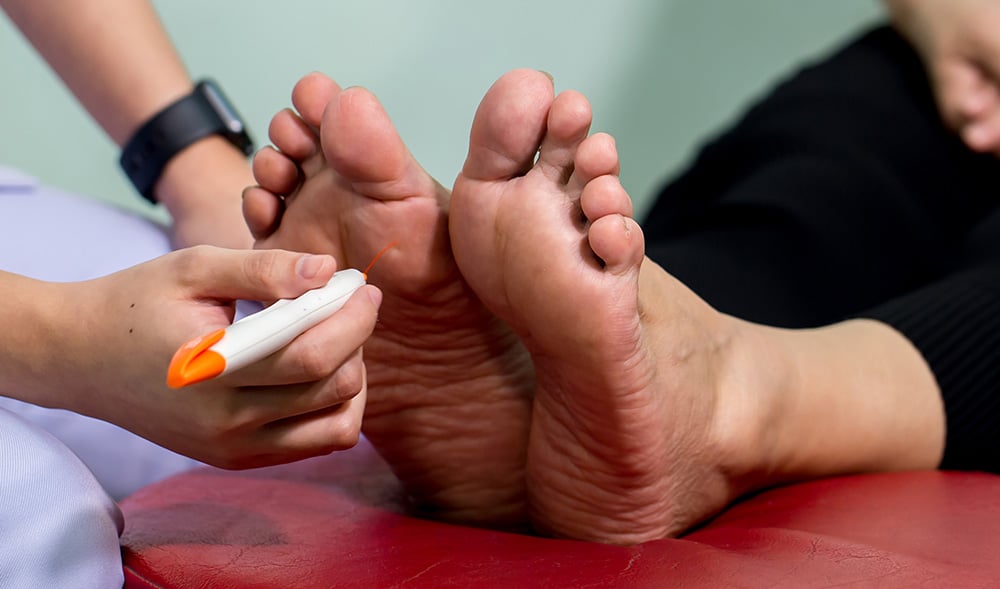Wound Care
One thing you don’t want to skip if you’re living with diabetes is inspecting your feet daily. It’s just as important as monitoring your blood glucose levels every day because high blood sugar can cause nerve damage called diabetic neuropathy.
The result is numbness in your feet, which means you might not be able to tell if a wound is developing as a result of a scrape, cut, or another injury.
These wounds can include open sores, also known as diabetic ulcers. In the worst-case scenario, they can develop into an infection that requires amputation.
About 14-24 percent of people living with diabetes who develop a foot ulcer will require an amputation, the American Podiatric Medical Association (APMA) reports. Diabetes is the leading cause of non-traumatic lower extremity amputations in the United States.
This outcome can be avoided, however, with proper diabetic wound care.
What to Look for When Inspecting Your Feet
To stop an actual or potential wound from developing further, here are several signs to look for when you’re inspecting your feet. They include:
- Cuts and scrapes
- Calluses and corns
- Blisters
- Bruises
- Bunions
- Rashes
- Discoloration
- Ingrown toenails
- Open sores
- Any other changes to your skin or nails
Signs of an ulcer include odor, redness, swelling, and/or drainage on your socks.
When should I See a Professional?
Once you notice any of the above signs on your feet, book an appointment with your podiatrist. If you notice an ulcer, seek medical care right away. The quicker it can be healed, the less chance it can become infected.
We recommend you visit a podiatrist at least once a year for a full foot exam if you’re living with diabetes. More frequent visits may be required if you’re experiencing neuropathy. Your podiatrist can work out a schedule with you.
Treatment Options for Diabetic Wound Care
Diabetic wound care can involve several treatments, both non-surgical and surgical.
If you have an ulcer on the bottom of your foot, you’ll likely have to keep pressure off your foot. This might mean you’ll have to wear a special boot, a brace, custom orthotics, specialized castings, or use crutches or a wheelchair.
You might also be prescribed a topical gel or antibiotic ointment and have to dress your wound with gauze.
And, as always, you’ll have to closely monitor your blood glucose level. This is important in diabetic wound care because high blood glucose levels can lead to small blood vessel disease. This condition limits the flow of blood, which carries oxygen and nutrients to heal the area.
You can always turn to your doctor or an endocrinologist to help you control your blood glucose level and reduce the risk of complications.
In some cases, a wound requires surgical intervention. These include shaving or the excision of bone, and correcting deformities, such as bunions or hammertoes, to remove pressure on the area.
When Skin Grafts Might be an Option?
We may suggest a skin graft if your ulcer isn’t improving after about two months of basic treatment.
Dermal skin grafts for diabetic ulcers close the wound to help it heal and prevent infection. They work the same way skin grafts help burn victims heal their skin.
The amount of time it takes a wound to heal depends on various factors, such as swelling, circulation, blood glucose level, the wound’s size and location, pressure on the wound from standing on it or walking, and what’s being applied to the wound.
Your wound can heal within weeks, or it may need up to several months.

Prevention is the Best Intervention for Diabetic Wounds
Daily glucose monitoring and foot inspections are the best ways you can prevent foot complications arising from diabetes. At the very least, you can catch a potential problem early, so you can get treatment quickly and prevent an infection that could lead to amputation.
Diabetic wound care includes both surgical and non-surgical treatments, and healing time depends on several factors.
Regular appointments with your podiatrist and endocrinologist, however, can also go a long way toward preventing wounds in the first place.
If you’re living with diabetes and have concerns about your feet, contact us to schedule an appointment at any of our six convenient Metro Kansas City locations in Missouri or Kansas.


